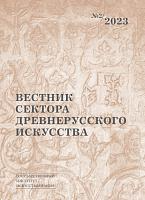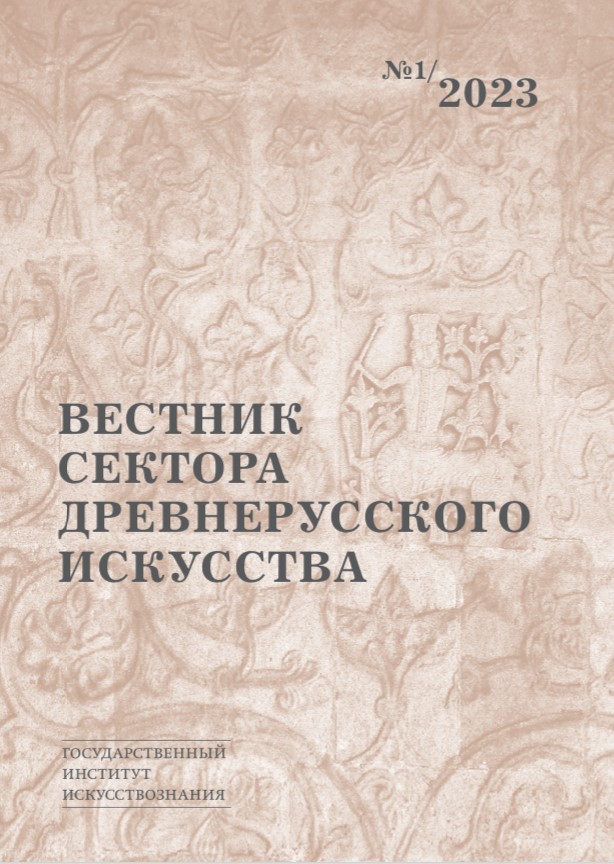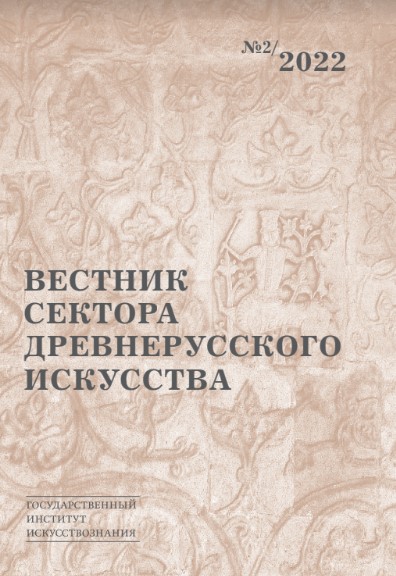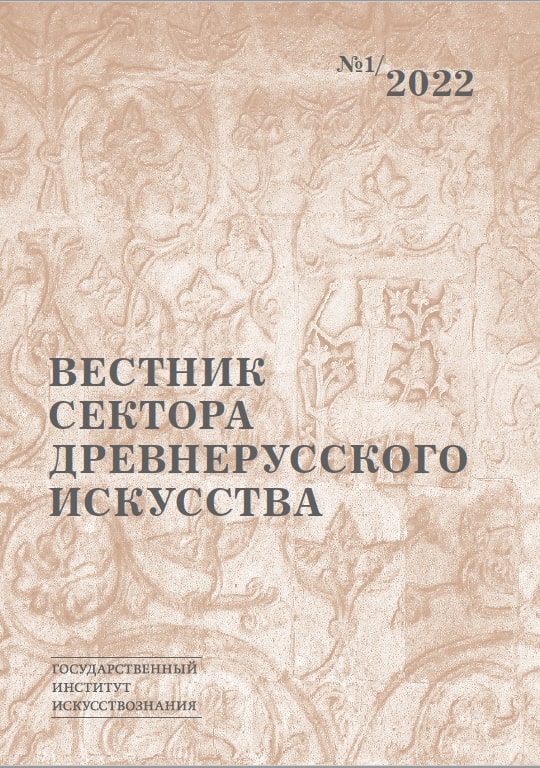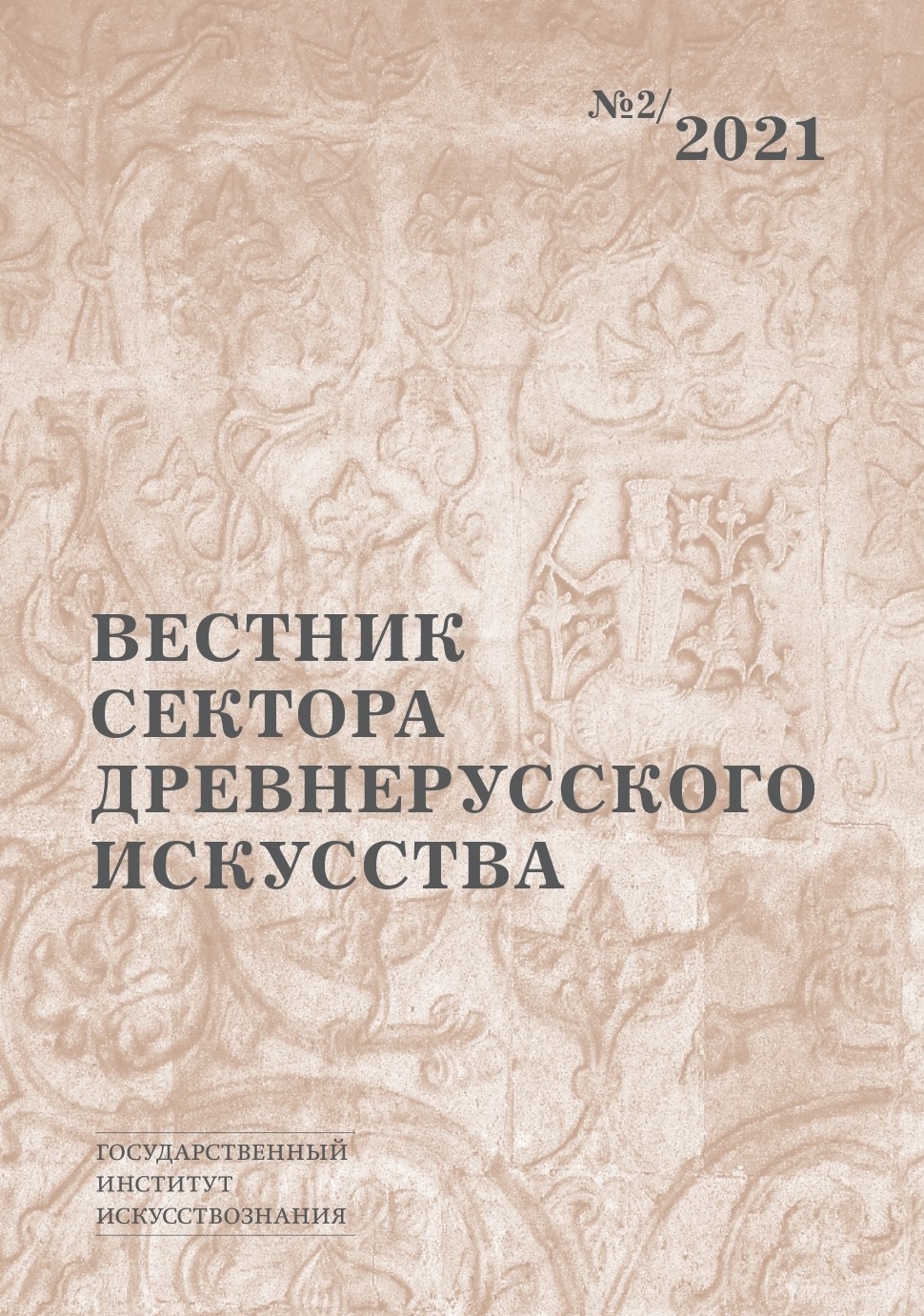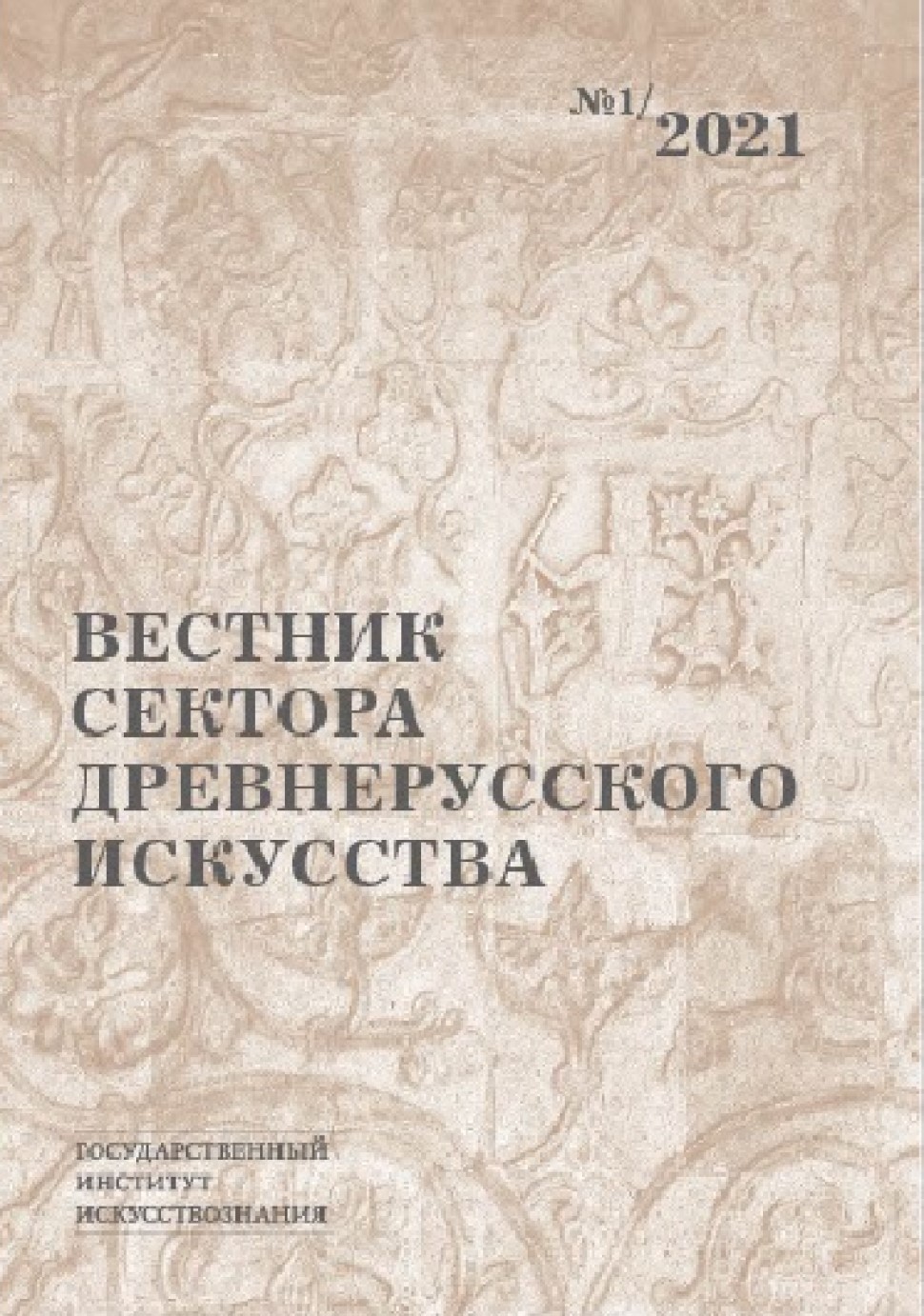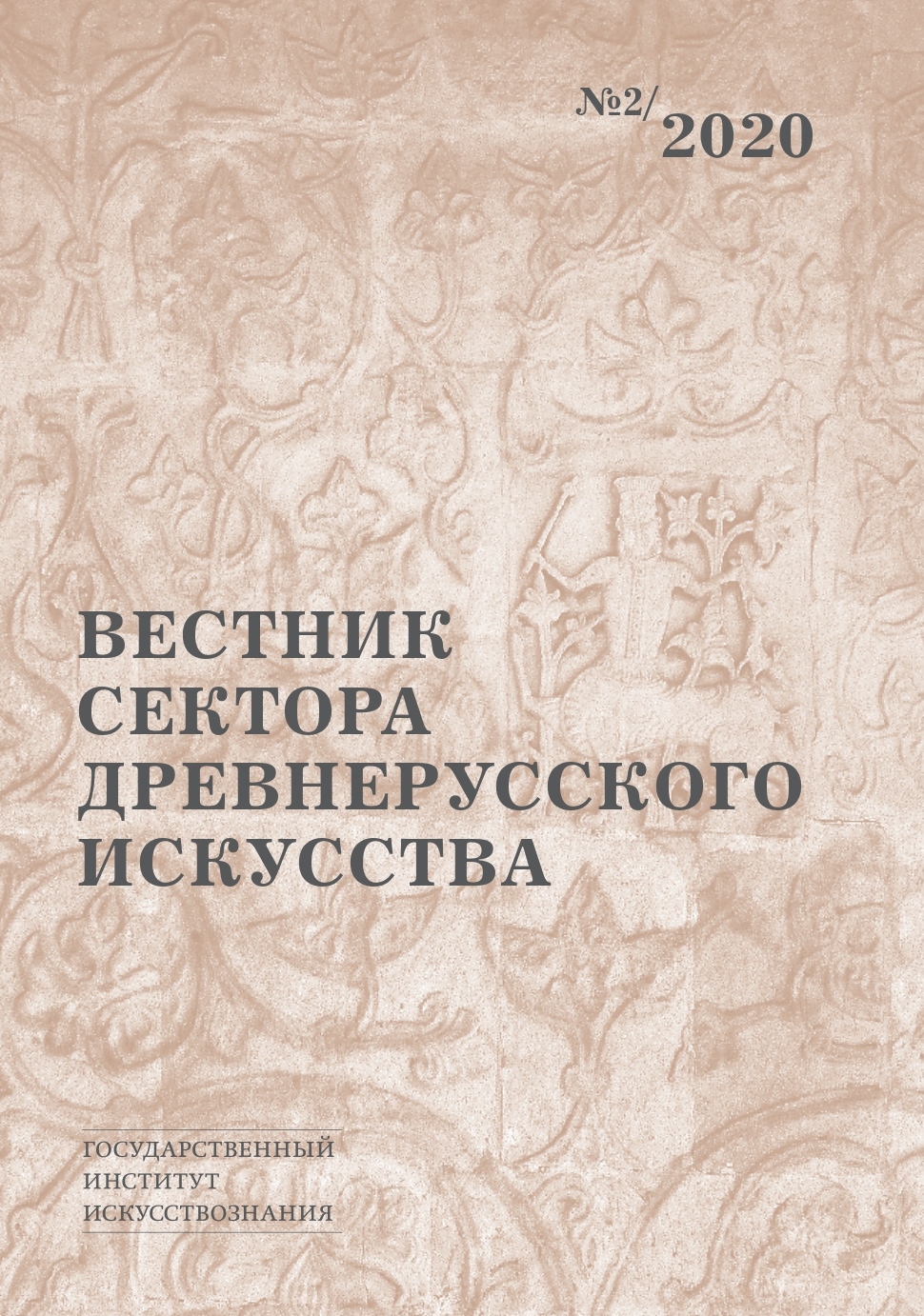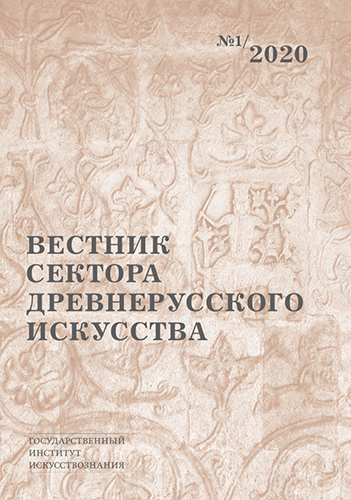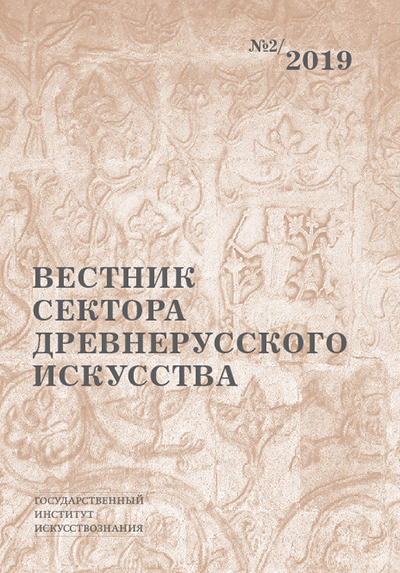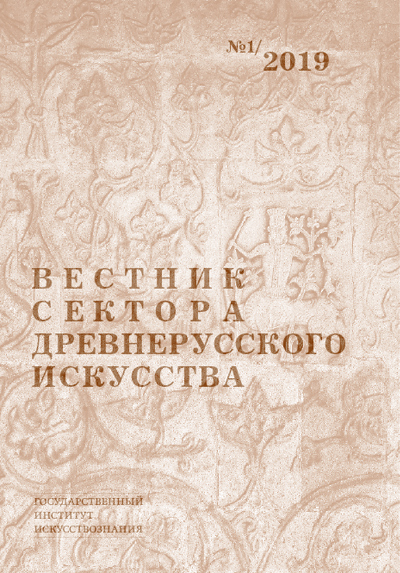2020 ¹ 1
Articles
Anna SlapiniaDecorated 12th Century Horn Plates from the Archaeological Layer of Pskov and the Theme of the Centaur’s Struggle with the Beast in Ancient Russian Art
Abstract
The article is devoted to the images of centaurs in the art of Ancient Russia of pre-Mongol time (until the middle of the 13th century). The meaning of the word “centaur” is separated from the meaning of the word “kitovras”. Old Russian images of centaurs are compared with Western European and Byzantine ones. Author classifies literary works about centaurs, that were reflected in the fine arts during the Middle Ages. Images of centaurs associated with medieval “Arateas”, where the constellations of the Centaurus and Sagittarius were depicted in the shape of this beast, are highlighted. Special attention is paid to the two bone plates dated from the 12th century, decorated with images of a centaur and an animal, that were found during archaeological excavations in Pskov. It is suggested that these images illustrate struggle between the constellation of Centaurus and the constellation of Lupus and were created under Western European influence. As an iconographic analogue to the artifacts from Pskov, an example from Polish Romanesque art of the 12th century is given, i.e. an image on the floor slab, found during archaeological excavations in Wiślica (Poland).
Keywords
Centaur, Kitovras, Minor Arts, Ancient Russian Art, Romanesque Art, Twelfth Century, Pskov, Wiślica, Astronomy, Aratea.
Irina ShalinaThe Old Icon of the Teotocos Hodegitria from Snetogorsky Monastery and its Place in Pskov Art
Abstract
A study of the census books of the Pskov land allows us to determine the origin of a number of old icons of the 14th century, including images of Hodegetria and the Pantokrator (“Eleazarovsky”), which became famous as wonderworking (both from the Pskov Museum), as well as “Boris and Gleb” (Tretyakov Gallery), which were included in the decoration of the Nativity of the Virgin Cathedral of the Snetogorsky Monastery (1309), painted in 1313. At the same time, the monumental worship icon of Hodegetria constituted a single ensemble with images of the saints in the lower register of the frescoes on the eastern wall of the church, built on the site of the martyrdom death at the hands of German knights of the first hegumen and brotherhood and conceived as a memorial pantheon. The composition of Hodegetria, dating back to Byzantine iconography such as the Cypriot image of the Mother of God of Arakiotissa (1192), is known in Russia only from the monuments of Pskov and, starting from the 13th century, becomes incredibly lasting here. The unique features of the Snetogory icon, primarily the figures of incense angels on the sides of the Virgin, are explained by the memorial function of the monument. The artistic features leave no doubt that the image was created simultaneously with the frescoes of the church in 1313 by its chief master, who represented the leading line of Pskov art, reflecting both the spiritual quest as extreme asceticism, of which Snetogorsky monastery became the center in these years; and the ideals of the urban elite, whose representatives were its main customers and donators.
Keywords
Byzantium and Russian icon painting of the late 13th — early 14th century, Pskov, Snetogorsky monastery, census books of the monastery property, artistic style, iconography of the Hodigitria.
Engelina SmirnovaNewly Discovered Novgorod Icon of the 15th Century Selected Saints from a Private Collection in Moscow. Iconography and Style
Abstract
The article is dedicated to the 15th century Novgorod icon with Selected Saints, purchased in 2019 for the private collection of N.V.Shutov, recently founded Moscow. The icon was cleared from under darkened varnish oil by V.V.Baranov. The main upper tier of the icon depicts St.Blaise, Basil the Great, Florus, and Laurus (all but Basil the Great are associated with the theme of healing, with an emphasis on the treatment of livestock, but also with a broader meaning). The relatively narrow lower tier shows Saints Cosmas and Damian and Anastasia (all three with attributes of healers). The newly discovered work belongs to approximately the middle— third quarter of the 15th century. It is one of the best known Novgorod icons of this century. Perhaps the heroic tone with which the images are rendered in the Novgorod icon of the 15th century reflects the artistic tradition of the previous century preserved in local art.
Keywords
Icon, Novgorod painting, saint healers, selected saints, two-tiered composition, variations of images, traditions of Palaeologon art.
Georgi GerovArchbishop Jonah of Novgorod and the Medovartsev Family
Abstract
The article is devoted to the relations of the Archbishop Jonah of Novgorod with the Medovartsev family. A comparison of the story of Jonah’s childhood with the Novgorod annals allows establishing that the father of the Archbishop was the posadnik Iurii Dmitrievich, who died in 1410. The role of Iurii and Yakov Dmitrievich is emphasized in the construction of a church in the Arkazh Monastery and in the choice of its name: Miracle of the Archangel Michael in Chonae. Jonah's care for the popularisation of this church is also highlighted. Since the Archbishop was left without a father at the age of 7, he was 67 in the year of his death. His earliest images are examined in the light of this new information. Some features of the story about Jonah’s childhood in the Medovartsev’s annals are discussed.
Keywords
Archbishop Jonah, Novgorod, Monastery of Otna, portrait of the ktetor, monumental painting, manuscript, embroidery
Alexandr LavrentyevVladimir upon Klyazma and the Artistic Life in Moscow of 14th –15th Centuries
Abstract
The article discusses the impact of the artistic life of Moscow in the mid-14th— early 15th centuries on the condition and fate of the monuments of pre-Mongol time on the lands of the Grand Duchy of Vladimir. Assumption Cathedral of Vladimir upon Klyazma constantly remained in the focus of the political life of Grand Duke Ivan Kalita and his descendants. The domes of the Cathedral being regilded by Moscow masters, the frescoes and the iconostasis being made by Moscow painters and the temple treasury being preserved and increased by the Moscow princes demonstrate the special place of Vladimir upon Klyazma as the second “mother of cities” in Russia after Kiev.
Keywords
Vladimir upon Klyazma, Moscow, architecture, frescoes, Assumption Cathedral, Andrey Rublev, Svidrigailo Olgerdovich, Vassily Ermolin.
Irina SterligovaCarved Icons of Metropolitan Vissarion in the Vatican Museums: on the History of Russian-Italian Relations in the 15th Century
Abstract
The article argues that the carved bone reliefs from the Treasury of St.Peter's Cathedral in Vatican, which belonged to metropolitans Isidore of Kiev and Vissarion of Nicaea, can be attributed as parts of a portable folding icon made in the late 1430s in Novgorod the Great. The arguments considered in the article are stylistic and iconographic features of the reliefs, their Russian inscriptions and the material— walrus bone.
Keywords
Byzantine-Russian-Italian relations of the first third of the 15th century, Ancient Russian carved folds of walrus bone.
Anna Litvina, Fjodor UspenskijBoris Godunov and His Family in the Light of Medieval Russian Multi-name Tradition (Polyonymy)
Abstract
This paper considers a new look on the “anthroponymical dossier” of Boris Godunov and his family. Insufficient familiarity with the structure of the Medieval Russian polyonymy (that is, the practice of using many names for the same person) has been known to lead not only to the introduction of redundant and never-existing people to research papers, but also to real people taking redundant, imaginary names, which they did not and often could not have taken in reality. This paper takes a look at both the names the tsar had, without a doubt, and the names under which he existed in previous research (Boris, Bogolep, Iakov, Bogdan, Theodot). Special attention is given to the personal patron saints’ cult in Godunov’s family, mostly to St. Theodotus. Some problems of attribution and dating of several artifacts are raised.
Keywords
Medieval Rus’, Boris Godunov, Fyodor Borisovich Godunov, name giving in pre-Petrine Rus’, secular Christian dionymy, cult of personal patron saints.
Svetlana ZiuzevaThe Origin of «Niello Engraving» in Russian Jewelry of the 16th Century
Abstract
The article is dedicated to the origin of «niello engraving» on metal, that has significantly developed in the second half of the 16th century in the jewelry art of Moscow. In the article we trace the connection of Russian jewelry art and Italian decorative arts, where the technique of niello was especially common in the church art in the second half of the 15th–16th centuries. In the article the new attribution (1550s) of the cover of the icon John the Baptist from the Moscow Kremlin collection is suggested and the assumption is made that the figurative images in niello could have been created by an Italian master.
Keywords
Russian jewelry, metalwork, niello, Kremlin workshops, influence of Italian art, 16th century
Nadezhda PivovarovaThe Silver Shrines of Russian Miracle-workers of 17th Centuries. To the Question of the Construction and Appearance of the Precious Tombstones in the Time of Earliest Tzars of Romanov’s House
Abstract
The article is devoted to the analysis of well-known works of Old Russian silversmithing— the shrines of Russian Miracle-workers. Author devotes much attention to the fragments of the shrines of Ss. Alexander of Svir, Cyril of Belozersk, Paphnutii of Borovsk, Sava of Zvenigorod and examines the archival and figurative sources relating to their making, construction and their reworks. Author suggests a new date of the shrines of Ss. Alexander of Svir and Cyril of Belozersk. For the first time publishes the texts of the inscriptions situated on the walls of the shrines of St. Cyril of Belozersk. Research is founded on documents of archives of Armory for the first time used in the scientific literature.
Keywords
Shrine, embossed tombstone, Silver chamber, Alexander of Svir, Cyril of Belozersk, Paphnutii of Borovsk, Savva of Zvenigorod.
Elena Burenkova, Andrei GamlitskiyTitian’s Annunciation from the Venetian Church of San Salvador and Russian Icon Painting of the First Half of the 18th Century
Abstract
The article explores first two works of Russian icon painting of the first half of the 18th century, in which Titian’s painting The Annunciation (1559–1564. Chapel of St. Augustine, Church of San Salvador, Venice) is used as a sample. These are the icon of an unknown artist from the iconostasis of the Trinity Cathedral, Pskov (1704) and the icon of the Moscow artist Emelyan Nikitin (1730s–1750s, Tretyakov Gallery). The authors suggest Russian icon painters used engravings by Cornelis Cort (ca.1566) or Pieter Goossen (1640s–1670s), reproducing the painting of Titian. It was established that Russian icon painters also used other West European engravings along with the work of Titian. Analyzing the style, painting techniques, methods of sample interpretation, the authors come to the conclusion that the icon of E.Nikitin is associated with the icon painting tradition of the Moscow Armory of the second half of the 17th century. The icon of the Trinity Cathedral in Pskov marks the development of European baroque trends in Russian painting. The two icons discovered by the authors of the article are the earliest fact known today of the Russian artists turning to the art of Titian. They demonstrate a complex and controversial picture of the development of Russian icon painting in the first half of the 18th century where the role of new European forms combined with the legacy of the art of the Late Middle Ages increased.
Keywords
Russian art of the 17th–18th centuries, Western influences, Russian icon-painting, Armory, Trinity Cathedral in Pskov, Titian, Cornelis Cort, Annunciation iconography
Chronicles
Restoration chronicles
Polina Tychinskaya, Oksana PolushkinaÐàáî÷àÿ õðîíèêà. Ðåñòàâðàöèîííûå ðàáîòû Ìåæîáëàñòíîãî íàó÷íî-ðåñòàâðàöèîííîãî õóäîæåñòâåííîãî óïðàâëåíèÿ. Îêòÿáðü 2019 — ìàðò 2020 ãîäà
Exhibitions
Irina ShalinaIcons of the Hermitage. Opening of the Permanent Txposition Old Russian Icon Painting of 14th — Early 18th Century in the State Hermitage
Alexei GulmanovReview of the Exhibition Monument of the Andrey Rublev Era. Royal Doors from the Tatintsian Family Collection
À. Ë. ÃóëüìàíîâÂûñòàâêà «Ïàìÿòíèê ýïîõè Àíäðåÿ Ðóáëåâà. Öàðñêèå âðàòà èç ñîáðàíèÿ ñåìüè Òàòèíöÿí»
Reviews
Aleksandr PreobrazhenskiiLate Review: Polyakova O. A., Poslykhalina M. V. Signed and Dated Icons in the Collection of the Moscow State Integrated Art and Historical Architectural and Natural Landscape Museum-Reserve. Moscow, MGOMZ Publ., 2013
